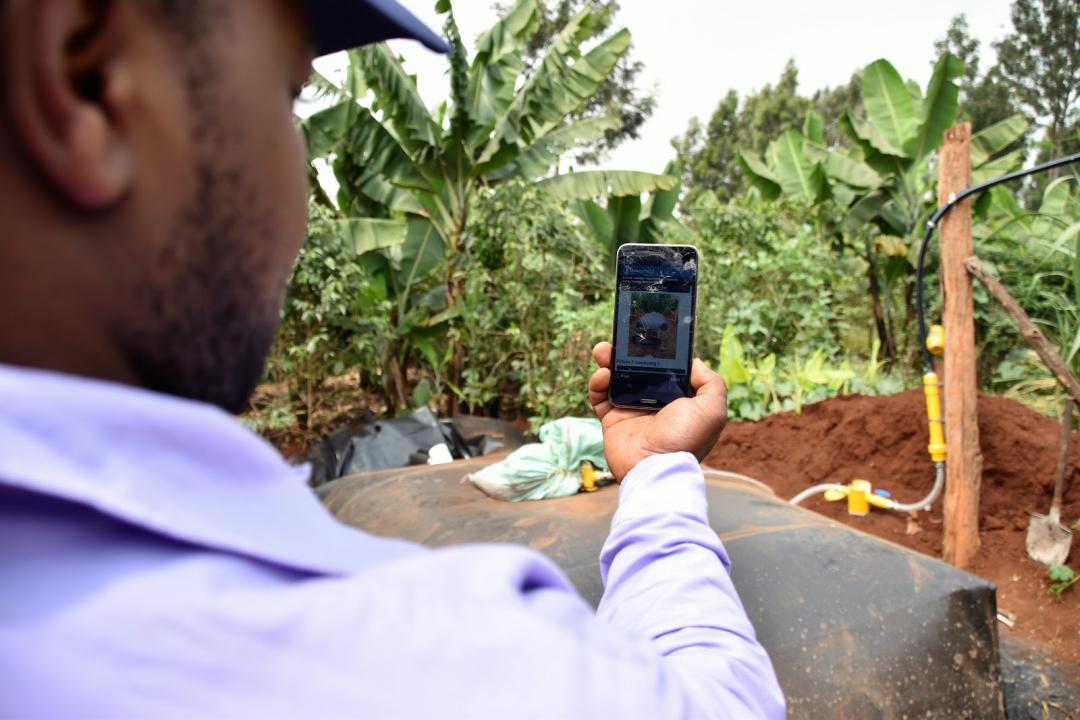We wanted to get down to the practicalities of handling customer relations. Therefore we asked those who are running successful social enterprises what tools they use to manage their B2B and B2C customer relationships and why. Here’s what they shared with us:

What tools do you use to manage customer relations and why?
TaroWorks is a social enterprise, which sells a mobile field service app that’s integrated with the Salesforce.com CRM system. Inclusive businesses and nonprofits use our product to manage their remote field staff and manage last mile distribution, even when offline. We practice what we preach by also using Salesforce to manage our own customer relations.
We assign a dedicated “Customer Success Manager” to each client, to make sure they’re getting value from using our tools. Using Salesforce, we can track the history of our customer relationship and interactions with each client and fill out a “Customer Success Plan” to guide our work. The Customer Success Plan lists the client’s expectations for using TaroWorks (example: “management can review a reporting dashboard to make decisions”) and outlines associated tasks and timelines. These plans form the basis for the regular check-ins with our clients.

We’ve also created an online community forum where clients can ask questions of TaroWorks and share knowledge with their peers. We also provide a Zendesk support site where customers can make requests for assistance from our support team. Information we receive from our Salesforce database, online forum and customer support system allows us to see how customers are using TaroWorks across the different industry sectors in which they operate like energy, WASH, SME development, agriculture, health and education.
How does this help you to create demand and market your product?
Our Customer Success Managers hear insightful stories from clients about how they are using TaroWorks, and our team is always on the lookout for real-world cases that can be shared with other customers as best practices. Once we’ve identified interesting use cases, we provide a platform for clients to show how mobile and cloud technology has helped them manage business operations and to outline lessons learned in TaroWorks webinars open to other clients and ICT4D practitioners in general.
The webinars have become an effective way to have TaroWorks customers learn from their peers’ experiences overcoming obstacles in the field. They have also helped us market our products and services to a broader audience by inviting other social sector program and IT professionals to join these free, live online information sessions or to watch a recording of the presentation at their leisure.

What tools do you use to manage customer relations and why?
Mosabi has to manage relations with and among our institutional B2B *customers* as well as our end-user *learners*. Our B2B customers are organizations with strategic priorities for financial inclusion in emerging markets of Africa, Latin America and Asia. We find great value in active involvement in sector conferences and thought leadership initiatives. We use HubSpot to manage and streamline the dialogue among those customers. Also, by contributing research and learnings to online collaboration platforms run by the World Bank, Accion, and e-MFP we help to amplify our voice amid a crowded space with many stakeholders.
Mosabi learners are emerging market citizens who are target clients of those institutions and who use our mobile app to learn new topics and build new skills. We manage relations with those users by using tools such as Firebase, Intercom, and messaging chatbots.
How does this help you to create demand and market your product?
We have done some traditional user acquisition and lead generation activities, such as social media advertising, marketing, and radio. But it’s expensive! Our scalable go-to-market strategy is to leverage the footprints and reach of distribution partners. By sustaining meaningful conversations with both our B2B customer segments and the populations that comprise our potential users, we can have a more powerful marketing strategy on several fronts. Accordingly, we can create demand with a multi-channel go-to-market approach.
A key part of this is building a user base through our institutional partners. That is underpinned by Mosabi's value proposition for screening efficiencies, better informed customers, and more meaningful engagement of clients. Potential distribution partners include NGOs, government agencies and programmes, aid and humanitarian organizations, CSOs, UN bodies, self-help groups, community training initiatives and other grassroots organizations. Across them, the common denominator is that they have mandates to provide support services to the same demographic that we target – low-income, underserved citizens who are often unbanked/underbanked and usually rely on informal entrepreneurship for generating income. A distribution partner who signs on with us also wants their members to benefit from our transformative education and also link to the financial products of our partner providers. When we look to enter markets, we don't do so without first having an anchor institutional partner – either a distribution partner or a financial service provider.

What tools do you use to manage customer relations and why?
We use an SMS platform because that is how we sign up our farmers, when we meet them in farmers' organizations. And also we use calls. Those are the two main tools. Most of our farmers don't have smartphones, so we opt not to send them emails, and not to engage them on the app, but to instead use the SMS service, which is free.
How does this help you to create demand and market your product?
Using a free SMS service does not cost the farmers anything, and they are willing to give us as much information as possible. The data that you collect usually includes where they are, what they are farming, when they will harvest, the date they will harvest and what price they have. We are then able to take that information using AI learning and send that to our buyers and anticipate production and demand.
